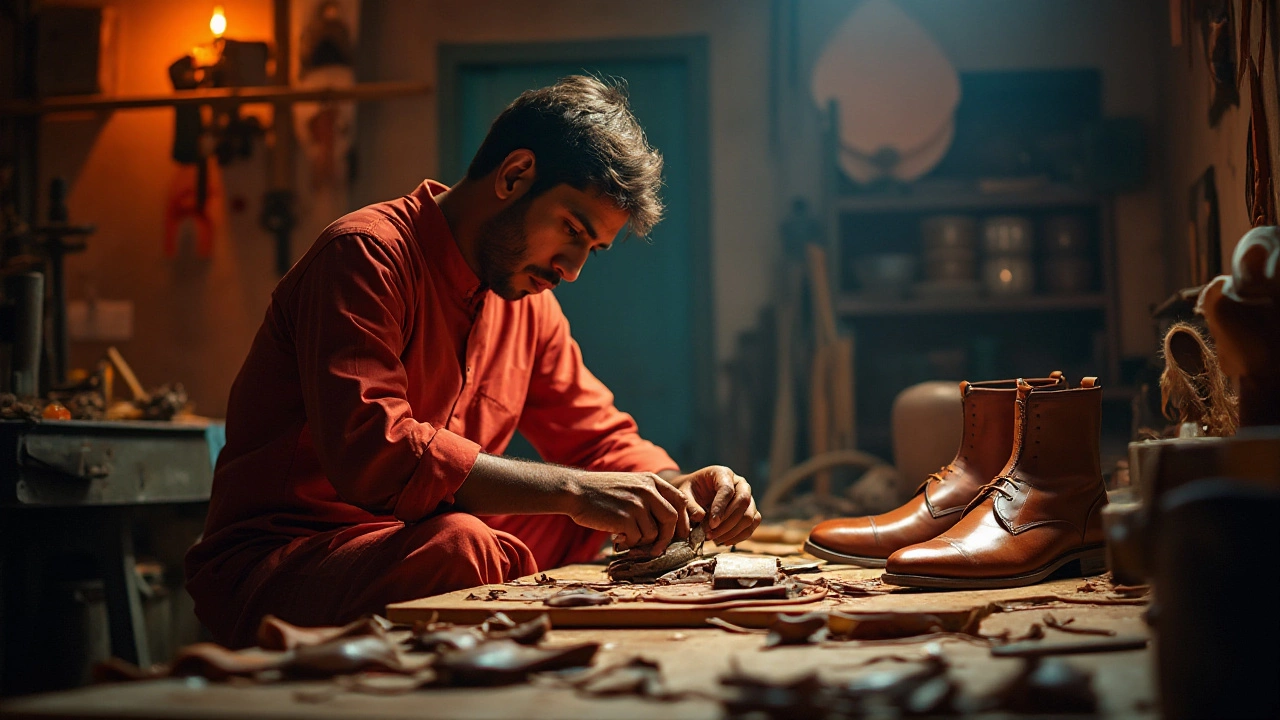Leather Flexibility: What It Means for Your Shoes and Jackets
When talking about Leather Flexibility, the ability of leather to bend, stretch, and bounce back without cracking. Also known as leather pliability, it decides how comfortable a leather item feels and how long it lasts. Leather flexibility is the quiet hero behind a shoe that moves with you and a jacket that never feels stiff.
One of the most common places you notice this trait is in leather shoes, footwear made from animal hide that relies on the material’s stretch to fit the foot’s shape. When the leather can flex, the shoe molds to the arch, reduces pressure points, and stays snug after hours of walking. In practice, leather flexibility encompasses smooth movement, while the stitching and sole construction require precise alignment to keep that stretch intact.
But it’s not just shoes. leather jackets, outerwear pieces that need to drape comfortably over the body while protecting against wind depend heavily on pliable hide. A jacket with good flexibility hangs naturally, follows your shoulders, and never feels like a board. Designers often choose softer leathers for fashion jackets, whereas tougher leathers are saved for heavy‑duty coats where rigidity is a feature, not a flaw.
The link between flexibility and footwear comfort, how pleasant shoes feel during everyday wear is direct. If a shoe’s leather can adapt to the foot’s motion, you experience fewer blisters and less fatigue. This relationship explains why athletes prefer trainers with supple leather uppers—they need a shoe that reacts as fast as they do. In short, footwear design influences leather flexibility, and flexible leather boosts comfort.
When you shop, look for clues that reveal a leather’s flexibility. Press the material gently; it should give a little before returning to its original shape. Check the grain direction—leather that runs with the grain bends easier than cross‑grain leather. Also, notice the lining; a well‑lined interior often means the outer leather can move without catching. These simple tests let you gauge whether a pair of slippers, trainers, or a blazer will stay comfortable over time.
Keeping that flexibility alive is all about care. A light conditioner applied once a month softens the fibers and prevents them from drying out. Avoid harsh chemicals that strip natural oils; they make leather brittle and lock up movement. When storing, hang jackets on wide shoulders and stuff shoes with paper to maintain shape. Proper maintenance preserves both the look and the pliability you loved on day one.
Below you’ll find a curated set of articles that dive deeper into how leather flexibility affects everyday items—from the hidden drawbacks of soft slippers to the science behind trainer uppers and the latest trends in leather jackets. Keep reading to see practical tips, buying guides, and care advice that let you make the most of flexible leather in your wardrobe.
The Many Reasons Leather Shoes Can Feel Uncomfortable

Leather shoes, while often a symbol of style and craftsmanship, can sometimes be a source of discomfort for many wearers. This discomfort can stem from various factors including the rigidity of the leather, inadequate fit, and lack of breathability. It's important to understand these aspects to choose the right pair that offers both elegance and comfort. Exploring these common issues can help consumers make more informed decisions when shopping for leather footwear. Discover effective tips to break in leather shoes and maintain their comfort.
- Dec 19, 2024
- Violet Greenfield
- 0
- Permalink